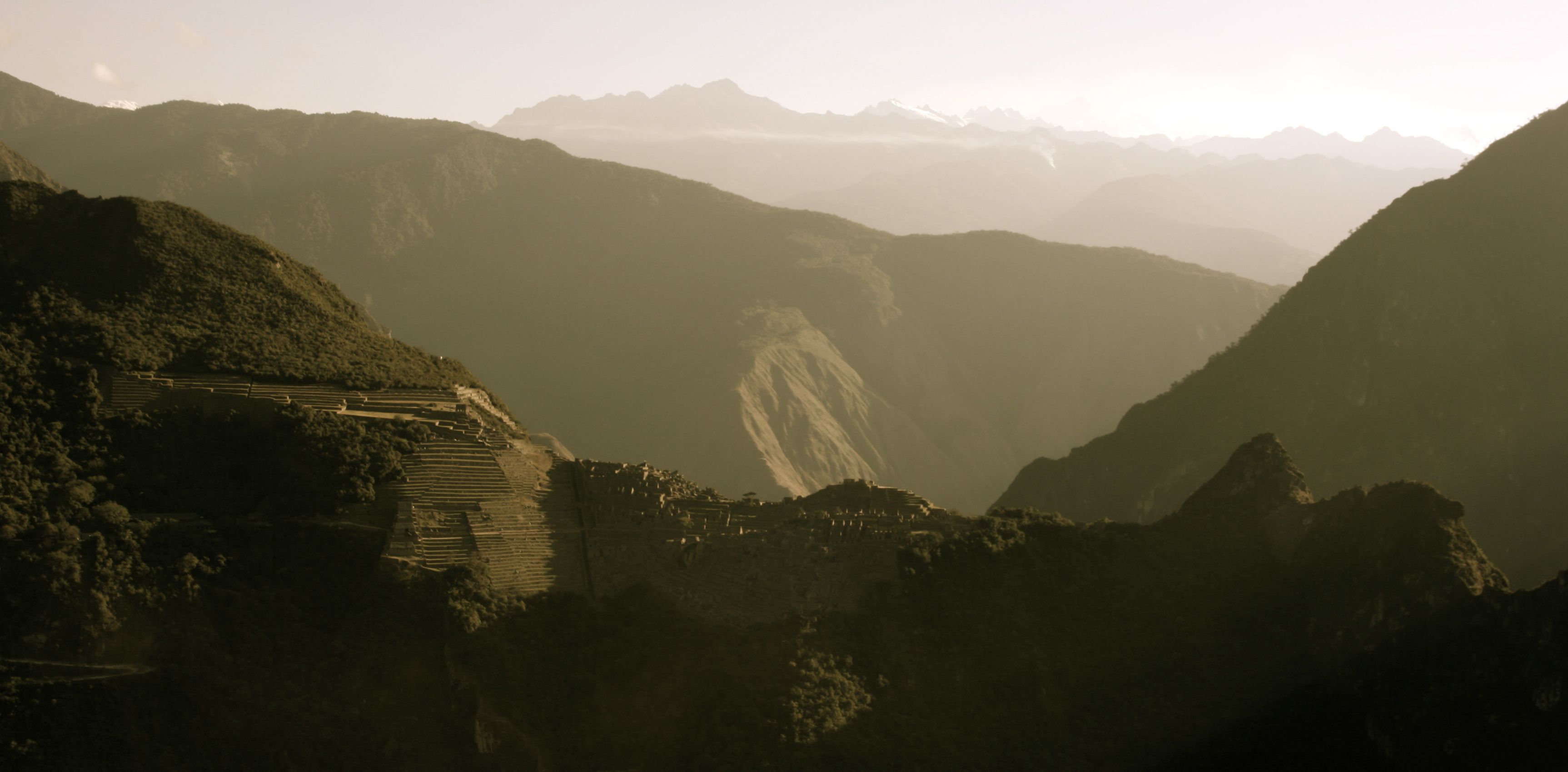Machu Picchu Visitor Tips
Machu Picchu is a unique and adventurous destination but is perhaps not as easy to get to as some of the other bucket list destinations that often get listed. For the Colosseum you fly to Rome and the rest is all pretty straight forward. For Christ the Redeemer you fly to Rio and can even take a taxi there. For Machu Picchu this is not that simple making that one would need at least two (preferably more) days in Peru to see Machu Picchu. With more complicated logistics also come some good tips and suggestions to keep in mind. Following the 10 most important ones.
1) Get all tickets in advance.
Not only the entrance tickets which depend on the type of ticket and the time of travel have to be purchased months in advance but also the train tickets. Once you purchased your entrance ticket, you will need to get there so it is best to get these tickets in advance as well. This way you have the best train times as well as most chances of getting riverside seats on the train (the most visually impressive side of the train). Bus tickets you can get on the same day but as you will be doing more waiting lines when visiting Machu Picchu you may want to save yourself this one already and get these tickets in advance. This also means that when planning your trip to Peru, you need to have picked the date for Machu Picchu in most cases before departure. Unfortunately visiting Machu Picchu does limit the option to change your itinerary throughout your trip somewhat. The ticket recommendation is for the whole year as many tickets sell out the whole year round.
2) Organize your times for Machu Picchu.
Machu Picchu is all about timing; trains, entrance tickets and bus tickets are all connected to times now so it is a good idea to organize your visit before purchasing anything. The following times may help; allow at least 2.5 hours to travel to Ollantaytambo if your train would be departing from this station. The train journey from Ollantaytambo to Machu Picchu can sometimes have some delays and you will need at least 15-20 minutes to get to the bus station once you get off the train. Count for about 20-30 minutes at the bus station and another 40 minutes in bus to the entrance. Therefore between the time of arrival to Aguas Calientes station and the time of your entrance it is best to leave about 1.5-2 hours time. For the return journey you will need about 30 minutes to get on the bus, a 40 minutes bus journey and another 20 minutes to the train station. Officially you also need to be at the train station 30 minutes before departure. Therefore it is also best to count for 1.5-2 hours for the return journey.
3) Hiking Huayna Picchu or Machu Picchu Mountain when doing a one day trip is not a good idea.
The two Mountains one can optionally visit when in Machu Picchu; Huayna Picchu and Machu Picchu Mountain, are both limited in numbers and times. Both climbs have a maximum of 400 people daily divided over 2 slots of 200 each. The slots for Huayna Picchu are 7.00am and 10.00am and for Machu Picchu Mountain 7.00am and 9.00am. There are early departures from Ollantaytambo (5.00am and 6.00am) that would allow you to hike Huayna Picchu on the same day as your train journey but apart from the unholy hour you would have to depart on, you will not be able to make the 7.00am slot. The second slot is possible but with some delays will also prove to be difficult. Therefore it is not recommended to try this in one day. For these hikes you either have to take a two day visit or arrive the night before at Aguas Calientes so you can head up early to the site the next day. Also keep in mind that with the mandatory circuits you have to plan on what moment you do either one of these hikes. Only the tickets that include either one of these optional hikes allow you to re-enter the site of Machu Picchu on the same day. Nevertheless as this means having to do the whole circuit again to get to the start of the hikes, this is not recommended. Therefore it is best to do the hike as part of the circuit. This means that for the climb to Machu Picchu Mountain you will be doing this on the beginning of your visit (the entrance to this hike is located close to the entrance) and for Huayna Picchu more or less halfway the mandatory circuit. On average it takes around 1 hour to get there from the entrance. After completing the hike you can then finish your mandatory circuit. At the end of these circuits you will be taken to the exit.
4) NO Re-entrance anymore.
It is no longer allowed to enter and re-enter Machu Picchu on the same day with the same entrance ticket. The only exception are the tickets that include Huayna Picchu or Machu Picchu Mountain which can still re-enter. This means that most visitors will have to keep in mind that once inside Machu Picchu, there are no facilities for water or snacks or restrooms to use. The only restrooms are located at the exit of the site. An average visit takes around 3 hours so keep this in mind when passing by the restrooms on arrival to the site.
5) Guides are a good idea.
In these modern times, a lot of people prefer visiting archaeological sites without a guide and do it with prior information read. Nevertheless, for Machu Picchu we feel that a good guide can definitely contribute to a better experience and providing context. Apart from providing the necessary history of the Incas, a history that is evolving as investigation techniques improve and more and more Inca secrets come to light, a guide can provide a valuable contribution to the layout and times of your visit. He or she can advise what parts to visit first, which parts close or open at certain times as well as know the places to take the best pictures and to grasp the moment. For a two day visit, you can take a guide for the first day and do the second day on your own account. Please keep in mind that there are intentions of making the use of guides mandatory for all visitors.
6) Food and water.
Simple, once inside Machu Picchu there are no facilities to purchase food or even water. Therefore make sure you bring this with you. Officially it is not allowed to have food or drinks with you on the site but this is not checked when entering. Water is of course not an issue and neither are small snacks or pre-made sandwiches you can eat without too much hassle. Do not attempt to have a full-out picnic as this is not allowed. Alcohol, including beer, is also not allowed. Whatever you bring you can best bring from Aguas Calientes as the small shop at the entrance is overly expensive. There are several bakeries in town that sell different sandwiches. Make sure not to leave any garbage at the site. There is also a buffet restaurant next to the entrance where you can have a buffet lunch for US$40 per person.
7) Break up your trip in the Sacred Valley.
Peru is a large country and therefore most people fly from Lima to Cusco, the airport closest to Machu Picchu. Still from Cusco it is another 100km to get to Machu Picchu and as you may know by now; there are no roads to Machu Picchu. In order to get there you need to get to the train station and here catch your train to Aguas Calientes from where you need a final bus to get to the entrance. In between the trip from Cusco to Machu Picchu the so called Sacred Valley of the Incas is located. This beautiful and peaceful valley is located at a lower altitude than Cusco and allows you to enjoy some of the authentic Peruvian countryside. The lower altitude makes it ideal to acclimatize before traveling to Cusco. The location and lower altitude, combined with quaint villages and hotels for all preferences make the Sacred Valley the ideal place to break the trip between Cusco and Machu Picchu. The Sacred Valley also has a ton of things to see and do as well of course.
8) Camera; do’s and don’ts.
In the days of cell phones, few people still have actual cameras. However, Peru, being such a photogenic destination, attracts a lot of amateur and professional photographers.For most places in Peru there is little issue with using any kind of camera or even a drone but for Machu Picchu this is not the case. Being very protective of the images of Machu Picchu and where they would be used, there is a ban on professional (looking) cameras, tripods or special lenses. As the lenses one uses or a tripod does not indicate that someone will use images for professional or commercial ends we agree that this is a very subjective rule. Therefore in case you would have camera material that looks kind of professional or expensive, you may want to put this in the bottom of your backpack and not take it out unless you would be using it. Tripods that you cannot put in your backpack are also a no-no and will have to be left at the entrance. Finally drones; to not attempt to fly a drone over Machu Picchu - due to its status as a national park, laws are strict and there will be consequences.
9) Eating in Aguas Calientes.
Aguas Calientes is a town that is built for quickly passing tourists on their way to Machu Picchu. This means that even though Peru may be one of the culinary capitals of the world, this is not necessarily reflected in Aguas Calientes. Some of the best restaurants in town are those with some of the larger hotels such as El MaPi, Sumaq or the Pueblo Hotel. Other well known places are El Indio Feliz and Toto’s House. Apart from these there are hundreds of small restaurants, some better than others. A lot of these offer fixed menus for economical prices. One thing to keep in mind when choosing one of these restaurants is service tax. In Peru service tax can be asked for by a restaurant but this has to be clearly indicated that this is separate from the prices on the menu. In Aguas Calientes it often happens that this is not mentioned but when you get the bill is charged. In this case you have no obligation to pay the service tax. If the owner gives you a hard time tell them you will go to the police as they know this is not allowed and they will back off.
10) What to bring.
In general it is recommended not to bring too much to Machu Picchu, especially since backpack larger than 15ltr are not allowed on the site. So in short what is essential to bring; small backpack, passport, tickets, water, snacks, hat, sun block, insect repellent, camera, light rain jacket (poncho) or windbreaker and walking sticks if needed. If you would bring walking sticks, make sure they have a protected tip or are from wood. Umbrellas are also no longer allowed.






